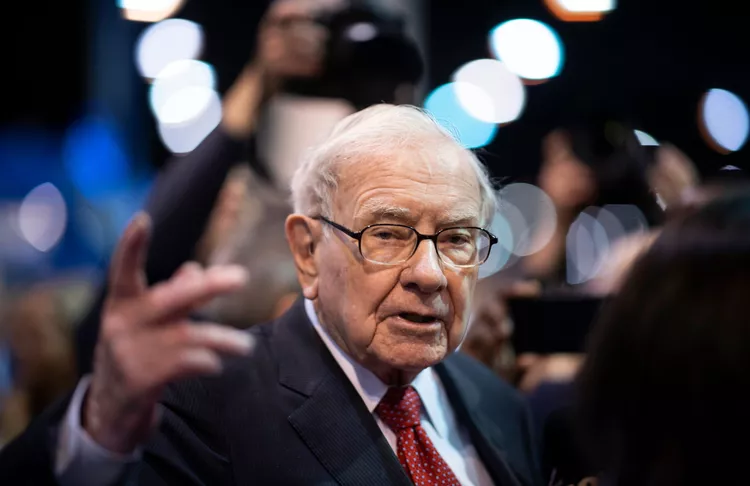Predicting the Financial Crisis in the New Year: A Deep Dive into Warren Buffett’s Theories
As the new year approaches, the global economy stands at a crossroads. Inflation, geopolitical tensions, rising interest rates, and lingering pandemic-related disruptions have created an environment of uncertainty. Investors and economists are asking: Are we headed toward a financial crisis? To answer this question, we can turn to the timeless wisdom of Warren Buffett, one of the most successful investors in history. By analyzing Buffett’s theories and investment principles, we can gain a deeper understanding of the potential risks and opportunities in the coming year.
Warren Buffett’s Core Theories and Their Relevance to Financial Crises
Warren Buffett’s investment philosophy is rooted in fundamental principles that have stood the test of time. These principles not only guide his investment decisions but also provide a framework for understanding broader economic trends. Below, we explore Buffett’s key theories and how they can help us assess the likelihood of a financial crisis in the new year.
1. Economic Moats and Business Resilience
Buffett often emphasizes the importance of investing in companies with strong economic moats—businesses that possess a sustainable competitive advantage. These advantages can include brand strength, cost efficiencies, network effects, or regulatory barriers.
Relevance to Financial Crises: Companies with wide economic moats are better equipped to survive economic downturns. If the new year brings a wave of bankruptcies or profit warnings from companies lacking such moats, it could indicate systemic weakness in the economy.
What to Watch: Monitor the performance of companies with weak competitive advantages, particularly in sectors like retail, hospitality, or small-cap stocks. A sharp decline in these areas could signal trouble ahead.
2. Market Valuations and Irrational Exuberance
Buffett has repeatedly warned against the dangers of speculative bubbles. He famously quoted his mentor, Benjamin Graham, saying, “In the short run, the market is a voting machine, but in the long run, it is a weighing machine.”
Relevance to Financial Crises: When asset prices are driven by speculation rather than fundamentals, a correction becomes inevitable. For example, the dot-com bubble of 2000 and the housing bubble of 2008 were both preceded by irrational exuberance.
What to Watch: Keep an eye on sectors with sky-high valuations, such as technology, cryptocurrencies, or real estate. If price-to-earnings (P/E) ratios or price-to-sales (P/S) ratios are significantly above historical averages, it could indicate a bubble.
3. Debt Levels and Financial Leverage
Buffett has long cautioned against excessive debt, both at the corporate and governmental levels. High debt levels can amplify economic shocks, making the system more vulnerable to collapse.
Relevance to Financial Crises: Rising interest rates, which are often used to combat inflation, can increase the cost of servicing debt. This could lead to defaults, bankruptcies, and a contraction in credit availability.
What to Watch:
- Corporate Debt: Monitor the debt-to-equity ratios of major corporations, especially in interest-rate-sensitive sectors like utilities, real estate, and consumer discretionary.
- Government Debt: Rising sovereign debt levels, particularly in emerging markets, could lead to currency crises or defaults.
- Household Debt: High levels of consumer debt, combined with rising interest rates, could reduce spending and slow economic growth.
4. Behavioral Economics and Market Psychology
Buffett understands that human behavior plays a significant role in financial markets. Fear and greed often drive market cycles, leading to booms and busts.
Relevance to Financial Crises: Sudden shifts in investor sentiment—driven by geopolitical tensions, inflation fears, or unexpected economic data—can trigger panic selling and market crashes.
What to Watch:
- Volatility Index (VIX): A sharp rise in the VIX, often referred to as the “fear index,” could indicate growing investor anxiety.
- Investor Sentiment Surveys: Tools like the AAII Investor Sentiment Survey can provide insights into whether investors are overly optimistic or pessimistic.
5. The Importance of Cash Flow and Liquidity
Buffett places a premium on companies with strong cash flows and ample liquidity. He often says, “Cash is to a business as oxygen is to an individual: when it disappears, death is imminent.”
Relevance to Financial Crises: In times of economic stress, companies with weak cash flows or high levels of illiquid assets are at greater risk of failure.
What to Watch:
- Free Cash Flow (FCF): Declining FCF across multiple sectors could indicate tightening financial conditions.
- Liquidity Ratios: A drop in current ratios or quick ratios could signal that companies are struggling to meet short-term obligations.
Key Indicators to Monitor in the New Year
Based on Buffett’s theories, here are some critical indicators to watch as we enter the new year:
- Corporate Earnings and Profit Margins: A decline in corporate profitability, particularly among blue-chip companies, could signal weakening economic conditions.
- Interest Rates and Inflation: Central bank policies, particularly in the U.S. and Europe, will play a crucial role. Rising interest rates could strain businesses and consumers, while persistent inflation could erode purchasing power.
- Debt Defaults and Credit Spreads: An uptick in corporate or sovereign debt defaults would be a red flag for financial instability. Widening credit spreads (the difference between corporate bond yields and government bond yields) could indicate growing risk aversion.
- Geopolitical Risks: Events such as trade wars, military conflicts, or energy supply disruptions could create shocks to the global economy.
- Consumer Confidence and Spending: A sharp decline in consumer confidence or retail sales could signal a slowdown in economic activity.
Can Buffett’s Theories Help Us Predict a Crisis?
While Warren Buffett’s principles provide a robust framework for understanding financial markets, predicting a crisis with absolute certainty is impossible. Markets are influenced by a complex interplay of factors, many of which are unpredictable. However, by applying Buffett’s wisdom, we can identify potential risks and take proactive measures to protect our investments.
For instance, Buffett’s emphasis on long-term value investing encourages us to focus on fundamentally strong companies rather than speculative bets. His aversion to excessive debt reminds us to maintain a healthy balance sheet, both as individuals and as a society. And his insights into market psychology teach us to remain calm and rational during periods of volatility.
Conclusion: Preparing for the New Year
As we stand on the brink of a new year, the specter of a financial crisis looms large in the minds of many. By turning to Warren Buffett’s theories, we can equip ourselves with the tools to navigate uncertainty and make informed decisions. While no one can predict the future with certainty, Buffett’s timeless principles remind us that sound financial practices and a focus on long-term value are the best defenses against economic turmoil.
In the words of Buffett himself, “Be fearful when others are greedy, and greedy when others are fearful.” As we enter the new year, let this wisdom guide us in preparing for whatever challenges—or opportunities—lie ahead. By staying vigilant, maintaining discipline, and focusing on fundamentals, we can weather any storm and emerge stronger on the other side.


